Directions (1-3): The following questions are accompanied by two statements (I) and (II). You have to determine which statements(s) is/are sufficient/necessary to answer the questions.
(a) Statement (I) alone is sufficient to answer the question but statement (II) alone is not sufficient to answer the questions.
(b) Statement (II) alone is sufficient to answer the question but statement (I) alone is not sufficient to answer the question.
(c) Both the statements taken together are necessary to answer the questions, but neither of the statements alone is sufficient to answer the question.
(d) Either statement (I) or statement (II) by itself is sufficient to answer the question.
(e) Statements (I) and (II) taken together are not sufficient to answer the question.
Q1. What is volume of cone?
I . Radius of cone is 3 cm less than side of square, whose area is 576 cm².
II . Height of cone is 7.5 cm more than radius of circle, which circumference is 66 cm.
Q2. What is rate of interest?
I . A man invested an amount for three years on simple interest and gets a total amount, which is 137.5% of invested amount.
II . Amir invested Rs. 9600 on simple interest and gets a total amount of Rs.13200 after three years.
Q3. The ratio between length of two trains is 9 : 8. What will be difference between lengths of both trains?
I . Speed of larger train and smaller train is 72 km/hr and 90 km/hr respectively. Both trains cross each other in 68/9 sec running in opposite direction.
II . Speed of smaller train is 90 km/hr and it cross a pole in 6.4 sec.
Directions (4 – 6): In the given questions, two quantities are given, one as ‘Quantity I’ and another as ‘Quantity II’. You have to determine relationship between two quantities and choose the appropriate option:
Q4. Quantity I – A bag contains five red balls, six green balls, ‘a’ yellow balls & ‘b’ blue balls. Probability of drawing one yellow ball is 1/6 , while probability of drawing one blue ball is 2/9. If two balls are drawn from bag without replacing, then find probability that one of them is red and other is yellow.
Quantity II – A bag contains dices only in three colors, eight green color dice, ‘x’ blue color dice and ‘y’ yellow color dice. Probability of drawing one blue dice is 7/20 , while probability of drawing one yellow dice is 1/4. If two dices drawn at random without replacement, then find probability that one of them is blue and the other is green.
(a) Quantity I > Quantity II
(b) Quantity I < Quantity II
(c) Quantity I ≥ Quantity II
(d) Quantity I ≤ Quantity II
(e) Quantity I = Quantity II or no relation
Q5. Quantity I – A cylindrical vessel with radius and height of 17.5 cm and 18 cm respectively is filled upto 80% of its capacity with milk. If total milk from cylindrical vessel transferred into 30 cuboidal vessels whose length and breadth is 7 cm & 3 cm respectively. Find height of each cuboidal vessel?
Quantity II – Breadth of a rectangle is 18 cm and ratio between length of rectangle and side of square is 12 : 11. If perimeter of square is 4 cm more than perimeter of rectangle. Find side of square.
(a) Quantity I > Quantity II
(b) Quantity I < Quantity II
(c) Quantity I ≥ Quantity II
(d) Quantity I ≤ Quantity II
(e) Quantity I = Quantity II or no relation
Q6. Quantity I – A boat takes double time in covering same distance in upstream as compared to downstream, if boat covers 96 km in downstream and 72 upstream in total 20 hours. Find time taken by boat to cover 240 km in downstream.
Quantity II – Distance between point A and point B is 720 km. A car covered ⅓rd of distance with its usual speed and remaining with 20% increased speed, if car takes total 10 hours 40 minutes to cover total distance, then find in what time car will cover a distance of 1200 km with its usual speed.
(a) Quantity I > Quantity II
(b) Quantity I < Quantity II
(c) Quantity I ≥ Quantity II
(d) Quantity I ≤ Quantity II
(e) Quantity I = Quantity II or no relation
Q7. A bank offers SI of 10% on principal amount below Rs.5000 otherwise 20%. A man invested Rs. A for 3 years. What is the value of A?
(A) If he had submitted Rs. 3000 more, he will get an interest of Rs. 900 more.
(B) If he had submitted Rs. 4000 more, he will get an interest of Rs. 2400 more.
(C) Value of A is multiple of 500.
(a) Either A and B or B and C are sufficient to answer the question
(b) Either A and B or A and C are sufficient to answer the question
(c) Either A and C or B and C are sufficient to answer the question
(d) A, B and C together are sufficient to answer the question
(e) All of the statements together are not sufficient to answer the question.
Q8. A man has two items A and B. What is the selling price of item B?
(A) The amount obtained after selling 4 of item A and 1 of item B is Rs. 70. From this amount he either could buy 7 of item A or 1 of item A with 4 of item B.
(B) Profit earned on selling 1 of item B is Rs. 3 and profit % earned on selling 1 of item A is 30 %. Selling price and cost price of item B are Rs. 5 greater than that of item A respectively.
(C) Ratio of profit % earned on A and B is 3 : 2 and ratio of their cost price is 2 : 3 respectively. All profit % , cost price and selling price have integer value.
(a) Either A and B or B and C are sufficient to answer the question
(b) Either A and B or A and C are sufficient to answer the question
(c) Either A and C or B and C are sufficient to answer the question
(d) A, B and C together are sufficient to answer the question
(e) Either only B or A and C together are sufficient to answer the question
Q9. Is |a × b| ≥ 10?
(A) a + b = –3
(B) a × b < 0
(C) a + 2.5b = 0 and both a & b are integers
(a) Only statement ‘A’ alone is sufficient to answer the question
(b) Only statement ‘B’ alone is sufficient to answer the question
(c) Only statement ‘C’ alone is sufficient to answer the question
(d) Any of two statements are sufficient to answer the question
(e) All three together are sufficient to answer the question
Q10. Three friends Sonu, Monu and Jonu live together. Age of two of them is same. What is the age of Monu?
(A) Average age of all of them together is 32 years, 4 years lesser than age of Sonu.
(B) Age of Monu is 33⅓% lesser than age of Jonu and age of Monu is 8 years lesser than the averge age of all three.
(C) Average age of 2 of them is 2 years lesser than average age of all three together. Monu is youngest among them.
(a) Either A or B alone is sufficient to answer the question
(b) Either B or C alone is sufficient to answer the question
(c) Either A or C alone is sufficient to answer the question
(d) Any of the two statements are sufficient to answer the question
(e) Either only A or B and C together is sufficient to answer the question
Solutions
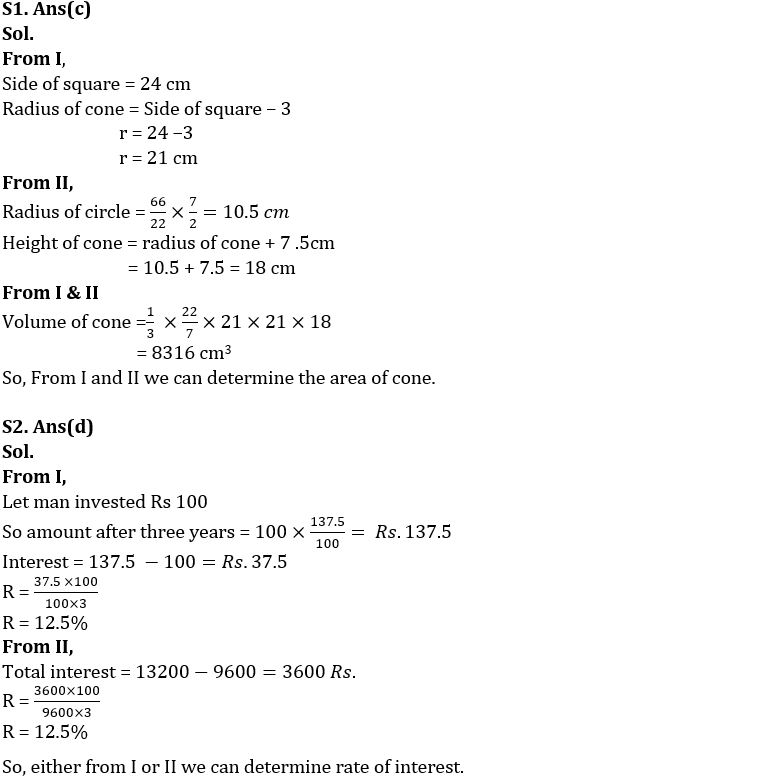
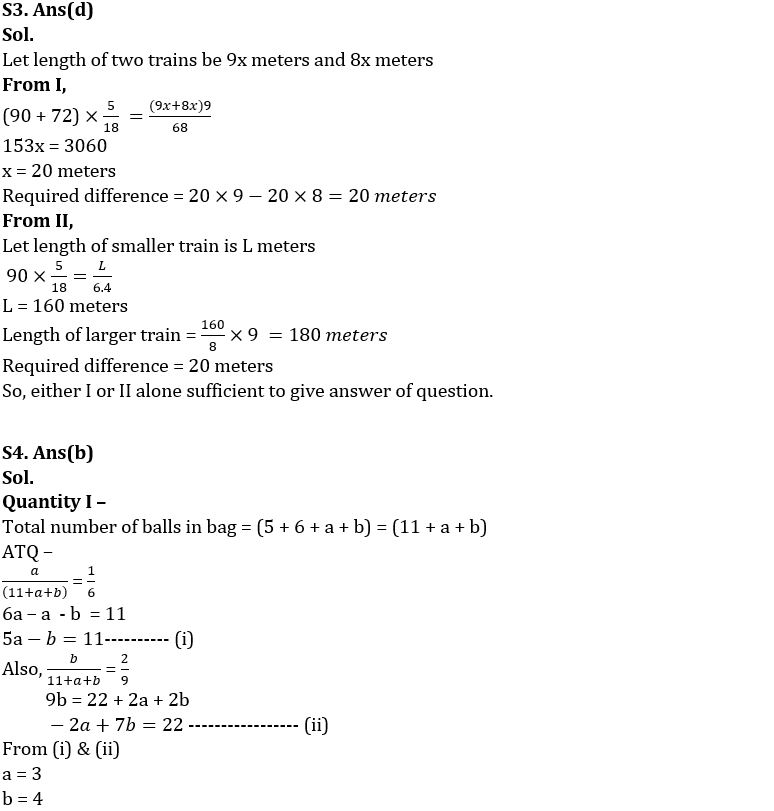

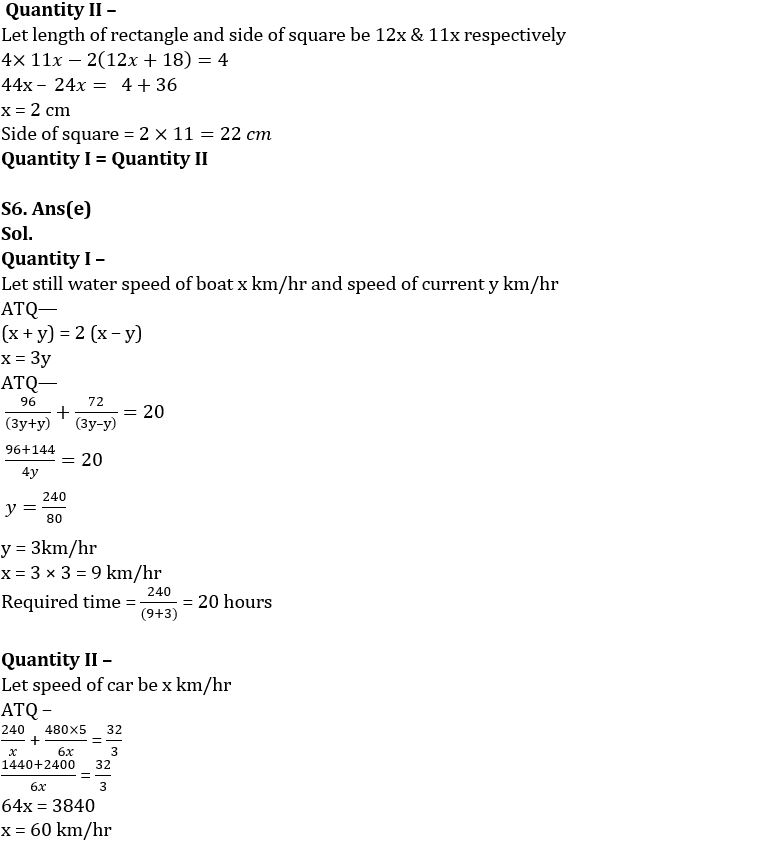
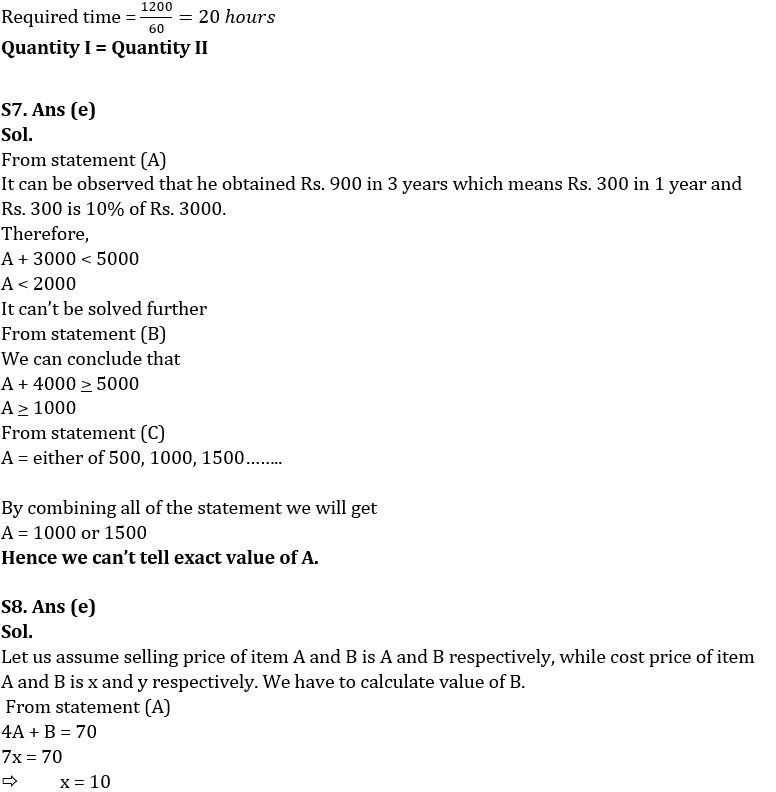
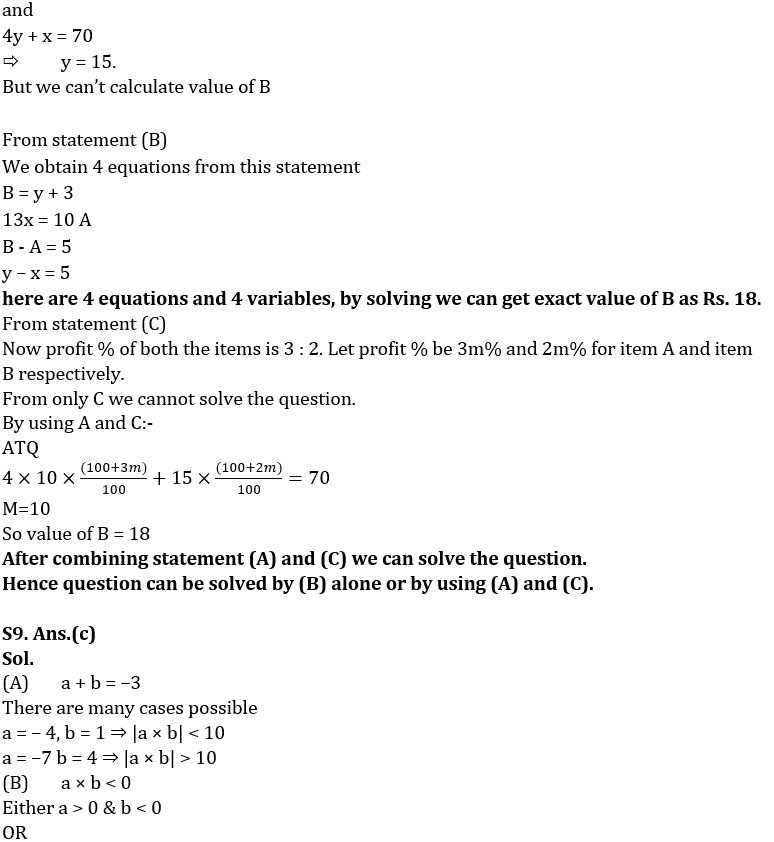
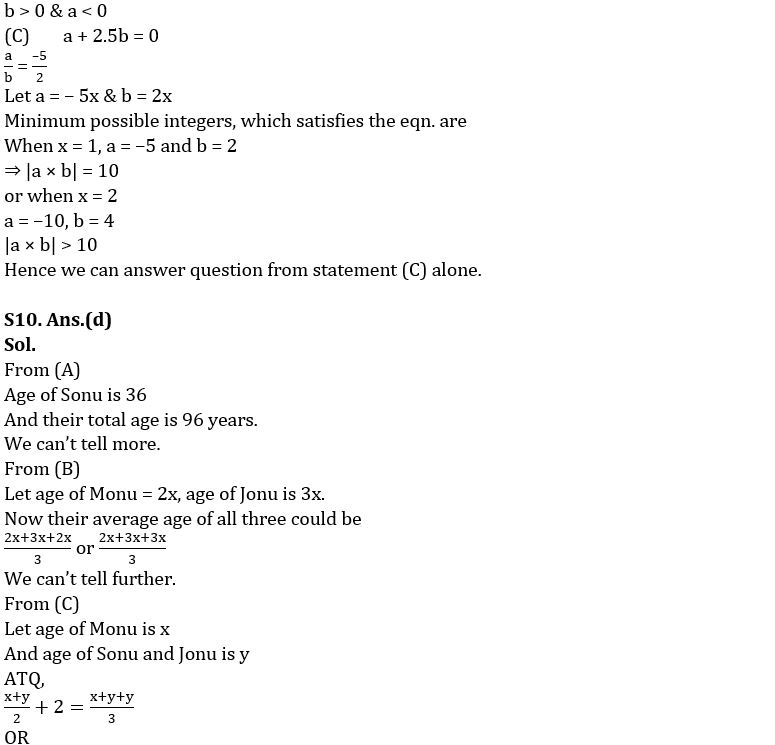
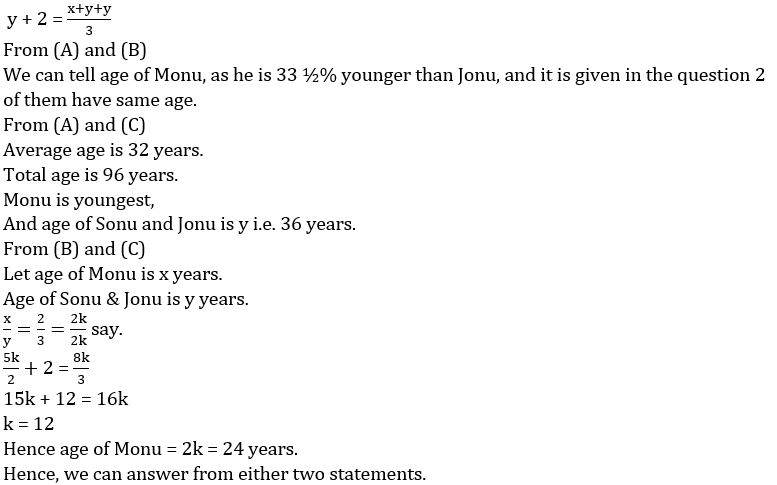


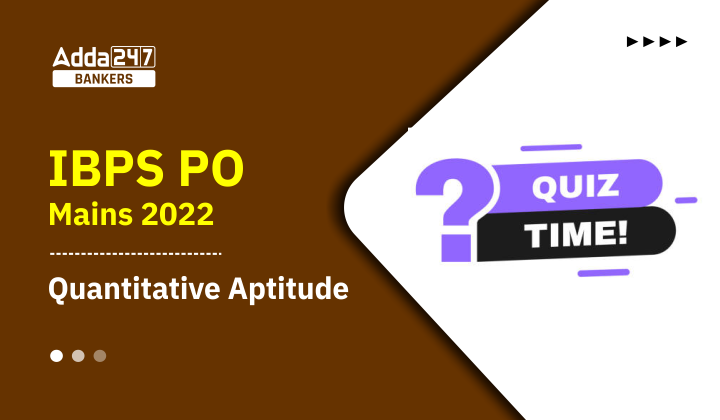


 GA Capsule for SBI Clerk Mains 2025, Dow...
GA Capsule for SBI Clerk Mains 2025, Dow...
 The Hindu Review October 2022: Download ...
The Hindu Review October 2022: Download ...
 SBI Clerk Prelims Result 2025 Out, Direc...
SBI Clerk Prelims Result 2025 Out, Direc...







